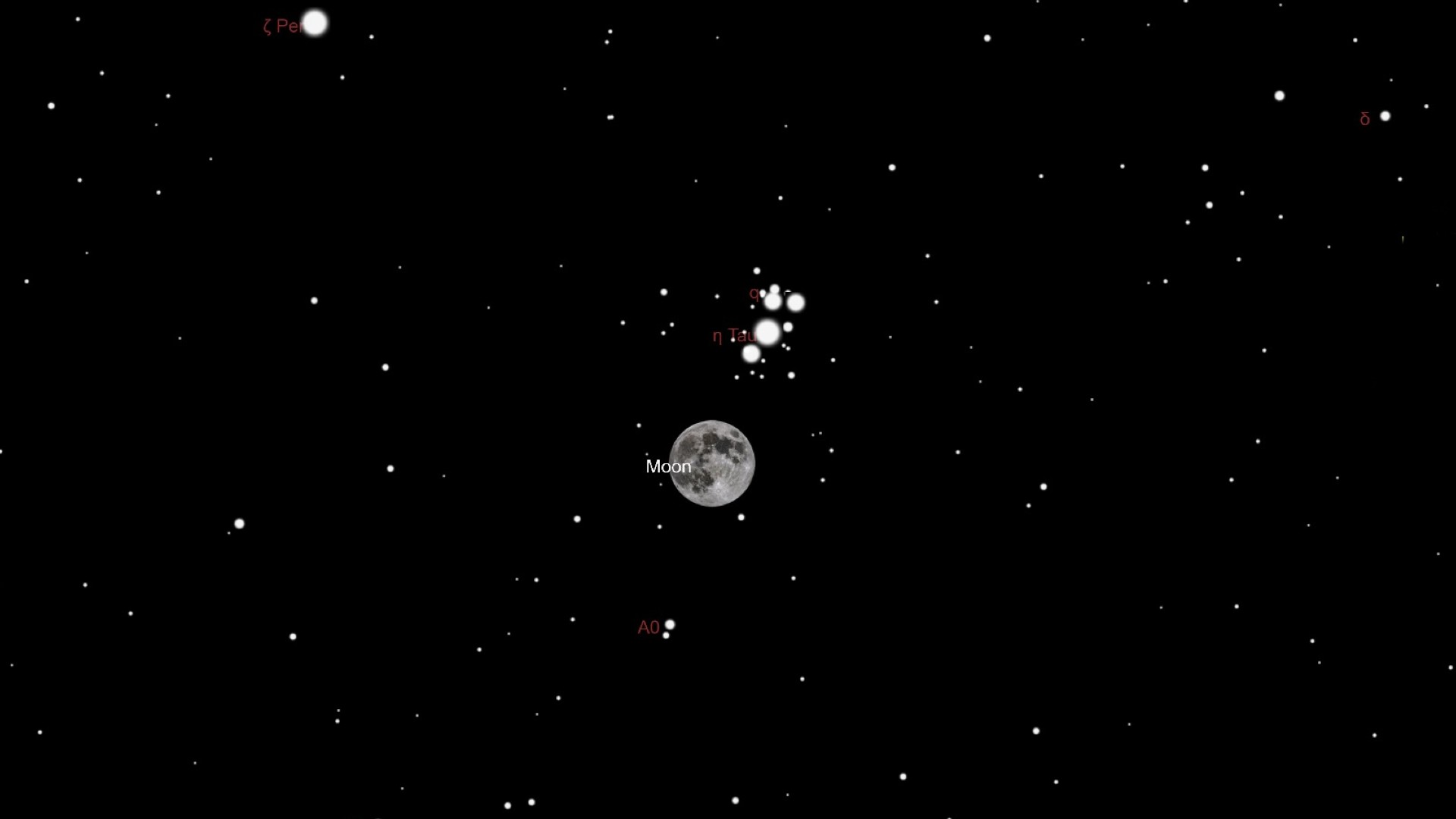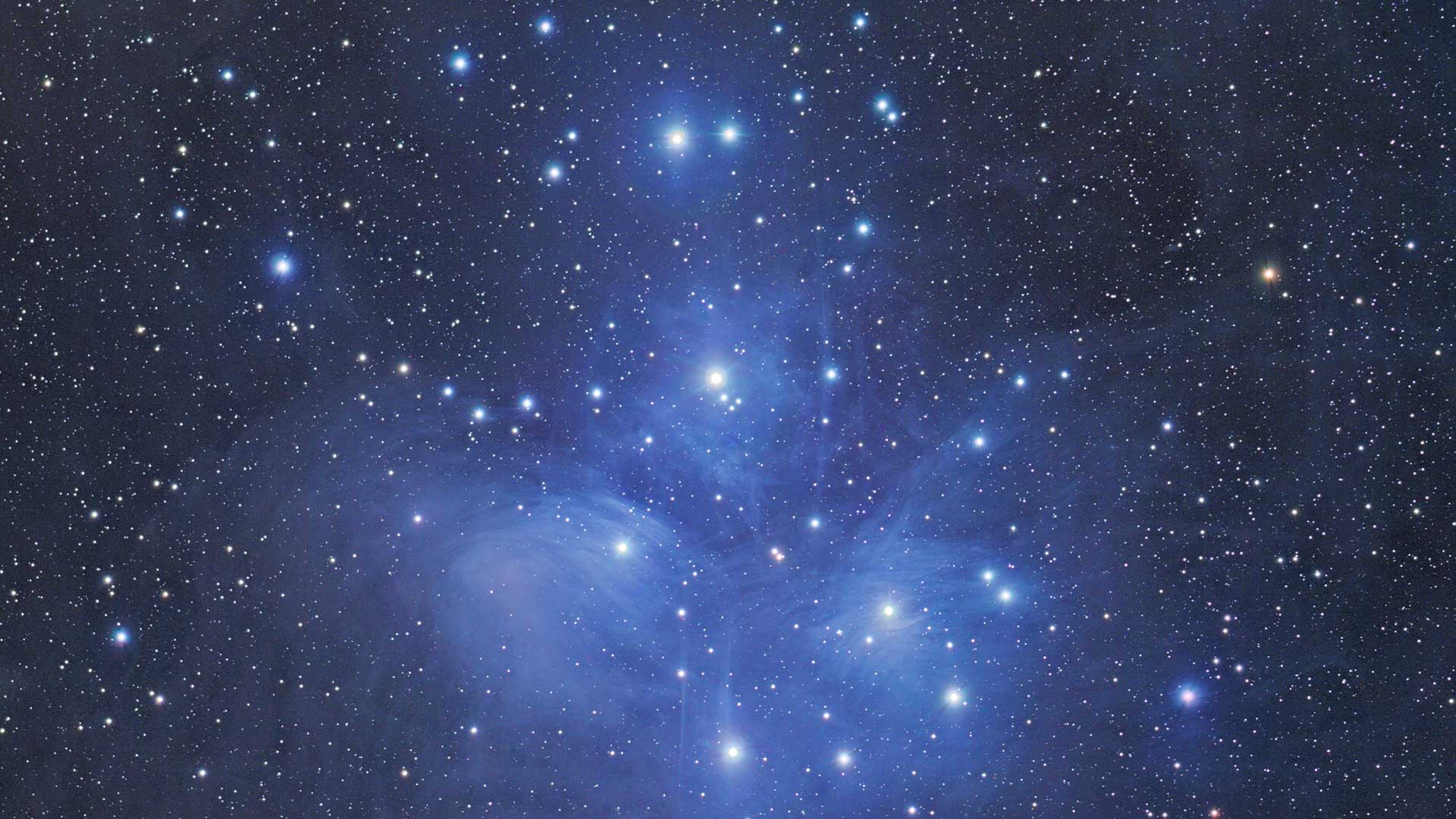
The moon has a date with the Seven Sisters, also known as the Pleiades stars cluster, on Sunday (Nov. 26).
The nearly full moon will make a close approach to the star clusters, passing to within 1 degree of the Seven Sisters, officially known by astronomers as Messier 45 (M45). Both the moon and the Pleiades will be in the constellation of Taurus during the close approach.
From New York City, the Pleiades will rise as 3:46 p.m. EST (2046 GMT) and the 14-day-old nearly-full moon will follow the star cluster over the horizon at 3:48 p.m. EST (2058 GMT), according to In the Sky. The sun will set at 4:30 p.m. EST (2130 GMT), allowing skywatchers to begin observing the arrangement.
The moon's date with the Seven Sisters will end at around 6:54 p.m. EST (1154 GMT) on the morning of Monday, Nov. 27.
Related: Night sky, November 2023: What you can see tonight

Get a telescope and check out craters on the moon up close! We recommend the Celestron Astro Fi 102 as the top pick in our best beginner's telescope guide.
During the close approach between the moon and the Seven Sisters, the former will have a magnitude of -12.7 and the latter a magnitude of 1.3. That means the moon will greatly outshine the stars of the Pleaides, making some of the fainter stars difficult to see. Binoculars could help resolve more of the cluster, but the brightness of the nearly-full moon will overwhelm a lot of them.
Even though this is a close approach, the Seven Sisters and the moon will maintain a respectable distance during their date, too wide part to be seen together in the field of view of a telescope, though they will be visible together in the wider field of view of binoculars.
Located around 44 light-years from Earth, the Pleiades is an astronomical object that has been of great importance throughout history. The Pleiades is defined as an open cluster, which is an arrangement of stars that are believed to have formed at roughly the same time and from the same collapsing cloud of gas and dust.
Of the roughly 1,000 stars, around six or seven are bright enough over Earth to be seen with the naked eye, which has meant the Pleiades had a place in many cultures and mythologies before the invention of the telescope.

Indeed, the very name the Seven Sisters arises from Mythology, in this case as a result of an association with the daughters of Atlas and Pleione, Alcyone, Maia, Electra, Merope, Taygete, Celaeno and Sterope, in Greek myth — also known as the seven sisters of the Pleiades. The Greek seven sisters were transformed into doves and then stars by the overlord of the Greek Pantheon of gods, Zeus. Each of the seven brightest stars of the open star cluster is named after one of the seven sisters, with two other bright stars in the Pleiades named after their parents — Atlas and Pleione.
Despite looking fairly diminutive in the night sky, the star cluster M45 is huge, with a stellar population that has a mass equivalent to around 800 suns. M45 also stretches for about 17.5 light-years, with its gravitational influence or "tidal radius" extending way beyond this and felt around 43 light-years from the open cluster.
The young and massive blue stars of the Pleiades are arguably the stellar cluster's star attraction, but M45 also has a large population of smaller and older red stars. M45 is also theorized to possess a wealth of brown dwarfs, also known as "failed stars," earning this slightly unfortunate label because they form like stars but lack the mass to trigger the nuclear fusion of hydrogen to helium that defines what a star is. Brown dwarfs don’t completely lack nuclear fusion. These astronomical objects that straddle the dividing line between stars and planets can fuse heavy hydrogen or deuterium beneath their smoldering surfaces — so not total failures.
Following its rendezvous with the Pleiades, the moon will be fully illuminated when it next rises on Nov. 27 as the Full Beaver Moon.
If you’re hoping to catch a look at the Pleiades during this close encounter with the nearly full moon, our guides to the best telescopes and best binoculars are a great place to start.
If you’re looking to snap photos of the night sky in general, check out our guide on how to photograph the moon, as well as our best cameras for astrophotography and best lenses for astrophotography.
Editor's Note: If you snap an image of the moon beside the Pleiades and would like to share it with Space.com’s readers, send your photo(s), comments, and your name and location to spacephotos@space.com.







